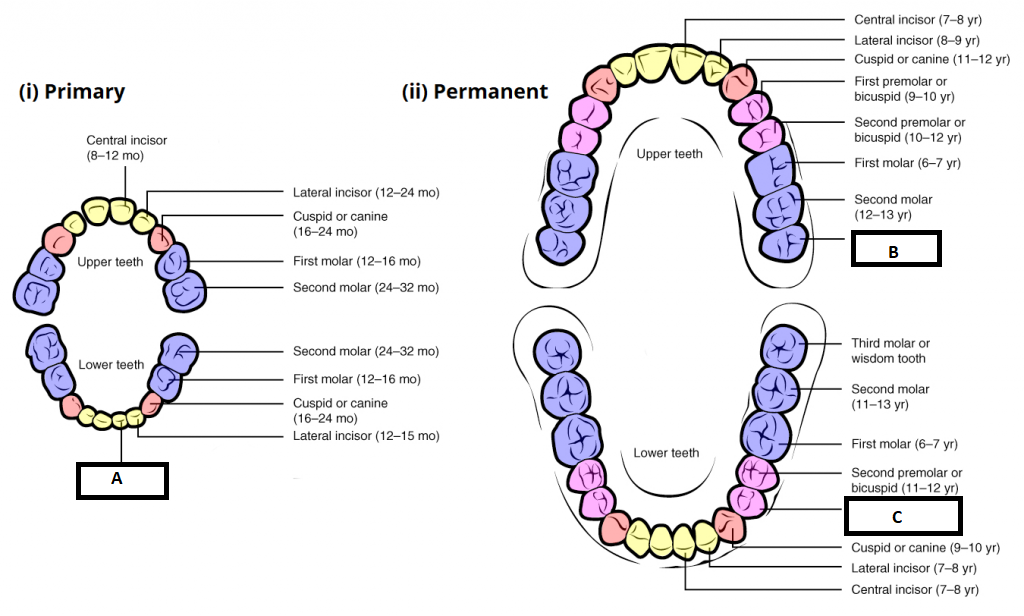Livermore Family Dentist
Establishing preventative dental care routines and providing restorative treatment options for the entire family. We treat your family like our own!
S. WARD ECCLES, D.D.S.
Welcome New Patients
About Us
Livermore Family Dental Practice

Child's First Visit
Dr. Eccles likes a child’s first dental visit to be before the age 2. It’s important for them to get used to visiting the dentist and to have routine checkup and cleanings
Oral Hygiene Instructions
It’s important to establish a daily oral hygiene routine to ensure the health of your gums, teeth, and tongue
Routine Check-ups and Cleanings
We recommend routine exam & cleaning every 3 to 6 months based on plaque build up and at home care
In-Office Treatment Options
Fillings, Inlays, Onlays, and Crowns, Bridges and Removable Partials, Dentures, Nightguard, Ozone
Coordinated Care
Cranial Sacral Therapy, Dental Implants, Extractions, Cavitation (NICO), Orthodontics, Use infographic from AAO website, Constricted Airway in Children,
Aligning Teeth
After Treatment Care
Changes to the anatomy of the tooth from restoration will need a refinement at a follow up appointment
Child’s First Visit
When is the right age for children to see the dentist? Dr. Eccles likes a child’s first dental visit to be before the age 2. It’s important for them to get used to visiting the dentist and to have routine checkup and cleanings.
Most children are able to tolerate treatment without nitrous oxide and they also become more confident in facing and handling a new situation without needing drugs to temper their normal fear and anxiety. Rest assured we do not introduce toxic mercury amalgam fillings, nor shiny metal crowns to children.
For very small cavities, oxygen/ozone can be applied with minimal to no drilling of teeth.
Changing Dentition
Human dentition is composed of two sets of teeth – primary and permanent. There are 20 primary teeth (full set around the age of 3) and 32 permanent teeth (starting at age 6). Primary teeth are referred to as letters A through T. Permanent teeth are referred to as number 1 through 32.
Primary dentition changes more frequently – roughly every 6 months a new tooth erupts or is lost. See the denoted eruption dates for each tooth in the image.
Delayed eruption can indicate the need to see an Orthodontist. Oral development can be monitored with interceptive treatment options available.
Dr. Eccles, a family dentist in Livermore can discuss questions you have about your child’s changing dentition.
We love this resource from Teach Me Anatomy! Visit their site for more goodies like this. We do not own the rights to this image.
Oral Hygiene Instructions
As an experienced family dentist in Livermore, Dr. Eccles emphasizes that it’s important to establish a daily oral hygiene routine for yourself and your family. By investing the time to care for your smile on a consistent basis, you are establishing a lifetime long habit. This habit will ensure the health of your gums, teeth, and tongue.We get asked a lot about proper at-home care. Here are a few tips!
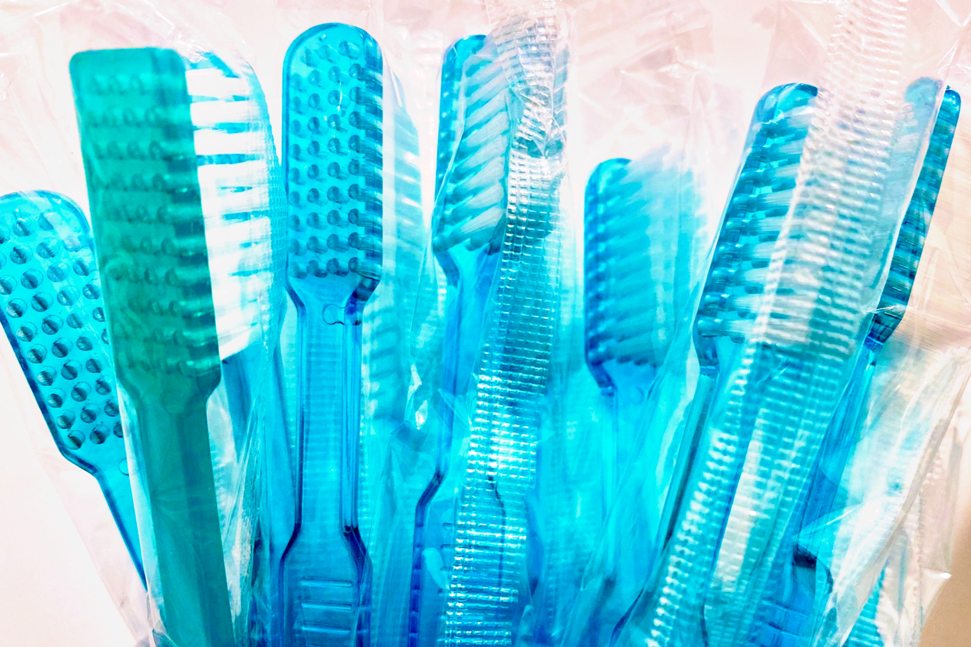
Flossing
40% of tooth surfaces are between the teeth. Those surfaces are also concave, making it harder to remove plaque with traditional floss and brushing alone.
There are many options to clean between the teeth; water flossers, floss picks, wax floss. But we have found one option we cannot live without – interdental brushes! We love TePe® Interdental Brush Original. With 9 different sizes in the trial pack, you are sure to find the best fit for your smile.
Learn more about them by clicking here.
To order TePe interdental brushes, shop here.
Best practice: Clean between the teeth before brushing.
Brushing
Brushing should begin in infancy and is more important to do at night before bedtime. Once teeth are brushed, only water should be had. If any other food or beverage is had, brushing should be done again.
We recommend a fluoride-free toothpaste. Baking soda can also be used as it has a low RDA (Relative Dentin Abrasiveness ). The toothpaste should be able to help remove bacteria and stains without harming the tooth enamel. Toothpastes with high RDA, can cause damage that cannot be repaired. Click here to read about the truth about baking soda as toothpaste.
Choose a manual or electric toothbrush with soft bristles. Brush at least twice a day (morning/after breakfast and at night before bed). Ensure to brush at the gumline between teeth and cheeks and between the teeth and tongue. The back of the lower front teeth is an area plaque collects more often. When brushing back teeth, slightly closing your mouth gives your cheeks a little slack to get those hard to reach areas. Click here for tips to help you brush better.
Best Practice: Brush without toothpaste before brushing with toothpaste. This will make it easier to feel where plaque may be collected.
Cleaning Your Tongue
Your tongue helps you to taste, eat, digest, and speak. It assists you in examining your teeth, gums, and cheeks.
There are many areas on your tongue for bacteria to collect. Cleaning your tongue daily with a tongue scraper or toothbrush will remove food particles and bacteria from these areas. Not cleaning your tongue can cause bad breath and even change the way your favorite foods taste!
Click here for more tips on cleaning your tongue.
Best Practice: Clean your tongue before you do a final rinse with water or rinse/solution.
Rinsing
Getting rid of bad bacteria is important but keeping good bacteria is also important. That’s why we recommend an alcohol-free oral rinse. Salt water or hydrogen peroxide water solutions are a great alternative.
Our favorite professional strength, all natural, alcohol-free rinse is Dental Herb Co. Tooth & Gums Tonic.
Best Practices: Rinse with at least water after every meal.
Routine Check-ups and Cleanings
Keeping up with your routine exams and dental cleanings is the right way to approach dental health. Prevention is key for a lasting smile.
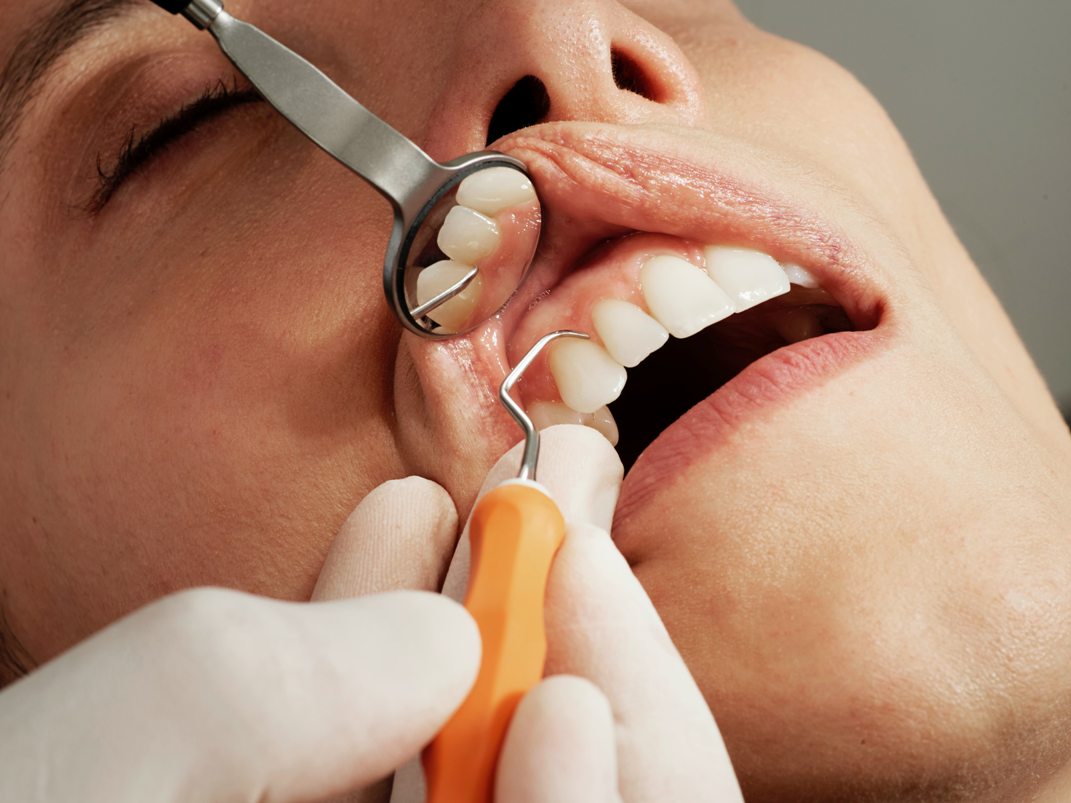
Children: We recommend children be seen twice a year; every 6 months for dental cleaning and routine check up. We recommend check-up x-rays once a year or as needed after the age of 5.
Teenagers: We recommend teenagers, depending on their home care, to be seen two to three times a year; 4 to 6 months apart. With busy schedules, it’s easy to fall behind on oral hygiene. Teenagers going through orthodontic treatment could benefit from being seen more frequently. Adding an additional cleaning is a great preventive measure your family can take.
Adults: We recommend adults to be seen two to four times a year. We recommend a routine exam and check-up x-rays once a year. Cleanings can be scheduled 3 to 12 months apart based on gum health, plaque build up, staining, and at home care. Pregnancy can also play a role in frequency of dental cleanings.
In-Office Treatment Options
There are many treatments offered in-office for you and your family. We take pride in providing dental treatment for patients of all ages. However, there are times where a pediatric dentist may be the best fit for your child.
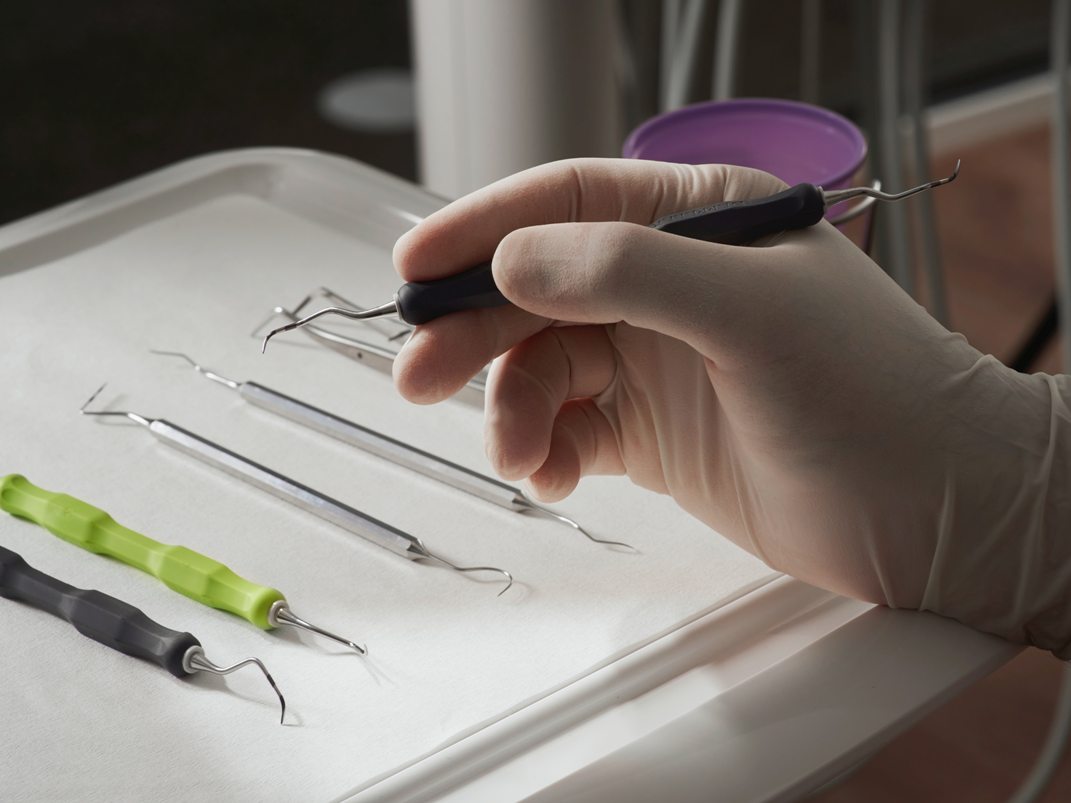
Sealants
Sealants are typically recommended for recently erupted permanent teeth in children to protect the tooth chewing surfaces if small cavity pits in the teeth are detected. Not all children need sealants.
Children with a high-risk of dental decay or teeth with deep grooves could/would warrant the needs for sealants. It’s important for a sealant to be applied correctly or the tooth is at a higher risk for decay. Once applied, it’s said sealants can protect against 80% of cavities for 2 years and continue to protect against 50% of cavities for up to 4 years. However, once a sealant is placed, the tooth will need a filling at a later time once the sealant has chipped and worn down.
Fillings
A filling is needed when decay has penetrated the enamel of a tooth. The decay is removed, usually leaving a void in the tooth. Dr. Eccles uses a resin composite “tooth-colored” material to fill the void, coloring and shaping it to look as natural as possible. The idea is to make it look as if it didn’t have treatment at all. The size of the filling is based on how many sides of the tooth need to be restored. We offer a 2 year warranty on all fillings.
Inlays, Onlays, and Crowns
When new or recurring decay affects a large amount of tooth structure, a stronger (ceramic/porcelain/gold) restoration may be needed. These types of restorations require two visits to our office as we work with a local dental lab to create the final replacement. During that time, you will have a temporary piece. It is important to return if your temporary piece does not feel comfortable when biting or chewing or is sensitive to temperature. The permanent piece is cemented at a second appointment. 3 year warranty for these types of restorations.
Gum Therapy
Bridges and Removable Partials and Dentures
When a tooth has been lost, extracted, or missing – replacement options can differ based on patient preference and current dental conditions. Removable options like full or partial dentures that look like natural teeth and gums are available for patients who prefer a lower cost yet long-term solution. Fixed options like conservative bridges are great for patients who don’t want to have to worry about removing an appliance.
Endodontic Treatment
Root canal therapy is indicated when a tooth is infected or has swelling that cannot be resolved. Based on your current condition of health, you may need to have a tooth treated with ozone, root canal therapy (cleaning out and filling inside of tooth), or have it extracted.
Root canal therapy usually consists of 2 visits, based on tooth condition and number of canals. If the tooth has extensive decay and/or calcification, additional time and cost may be necessary to treat the tooth. Learn more about root canals here.
Nightguard and Retainers
Bruxism, a condition where you repeatedly clinch and grind your teeth (sleeping or awake), affected nearly 15% of adults according to the American Dental Association. If left untreated, this condition can cause jaw pain, facial and neck pain, broken or worn teeth, headaches, and earaches. Bruxism can be caused by teeth alignment, constricted airway, sleep-disorders, stress, and demonic possession. 😉
A custom appliance, occlusal guard or splint, can be worn to ease symptoms of bruxism and protect your teeth and jaw from further damage. We encourage patients to consider Craniosacral Therapy before fabricating appliances to ensure the jaw and neck muscles are well aligned. These appliances can last 1-5 years with proper care. Some patients may need to be referred to a TMJ (Temporomandibular Joint Disorder) specialist.
Retainers keep teeth from moving. Most often used after straightening of teeth, it helps to stabilize the tooth in the bone when worn consistently. Over time, wear time will decrease. However, alignment of teeth will change with age. Women tend to have alignment shifts during pregnancy. Wearing retainers is key to maintaining your alignment whether you’ve had orthodontic treatment or not. Non-metal options are recommended.
Ozone Therapy
Oxygen Ozone is used in many aspects within our office because of its antimicrobial properties without harmful side effects. It is used to kill bacteria and sterilize the tooth before placement of dental materials to irrigate gum pockets and root canals. Read more.
Teeth Whitening
Reasons for whitening teeth can vary. Some patients prefer to address specific dark-colored teeth with internal bleaching. Others want to brighten their overall smile. With many in-office and at-home whitening systems available; it can be confusing to choose a whitening system that works, does not contain harsh or harmful ingredients, or cause sensitivity. Click here to learn more.
Coordinated Care
Cranial Sacral Therapy
This gentle, hands-on treatment uses light touch to examine membranes and movement of fluids in and around the central nervous system. Patients have reported relief from migraines, headaches, whiplash, jaw pain and tightness, chronic neck and back pain, chronic fatigue, fibromyalgia, injury to brain and spinal cord, scoliosis, and side effects of cancer treatment. It’s been also noted to help with dysfunctions like infant and childhood disorders, learning disabilities, dyslexia, ADD/ADHD, PTSD and central nervous system disorder.
Many patients can avoid damage to teeth by addressing jaw and neck related conditions through CST. It’s important to work with a craniosacral therapist who is comfortable working within the mouth as well.
Dental Implants
Non metal dental implants are the only implants we recommend for patients. Zirconia implants have been used in Europe for almost two decades. They are currently the only viable alternatives to titanium implants. This is especially important for patients with metal allergies or sensitivities.
They comprise two pieces: 1) the implant that is placed into the jaw bones and surrounding gum tissue and 2) the abutment that connects the implant to the crown. Dr. Eccles would refer you to a specialist for the placement of the implant and abutment. An appliance (usually a clear retainer) may be needed prior to the extraction and/or placement of the implant. This removable appliance is used to maintain the spacing between neighboring teeth, ensuring enough room for the implant to be restored with a dental crown. The specialist would follow up during the healing process to ensure a positive prognosis.
After 3-6 months, the implant can be restored with a customized crown that attaches to the abutment. It’s important to be seen for more frequent teeth cleanings following an implant restoration to ensure gum tissue stays healthy. Gum health plays a huge role in the success of an implant. Its said zirconia implants could be healthier for the gum tissue because the material retains less plaque and calculus than metal implants.
Tooth Removal “Extractions”
There are times when the prognosis of a tooth is unfavorable and an extraction may be needed. An oral surgeon is the best option for tooth removal as they have the special equipment available to handle even the most difficult extractions. They can also remove the periodontal ligament.
Ozone irrigation and injections are available at our office, immediately after tooth removal. Once you have scheduled your extraction appointment, give us a call or send us a text with the date and time so we can add you to our schedule on that day for ozone therapy.
Some oral surgeons may offer ozone as part of their procedure.
Orthodontics
The American Association of Orthodontics (AAO) recommends that a child have their first orthodontic exam by the age of 7. At this age, skeletal and dentition development can be assessed, monitored, and if necessary, interceptive treatment may be recommended. This can be due to restriction in airway, speech difficulties, grinding and clenching of teeth, difficulty in chewing and biting, mouth breathing, and facial imbalance (small lower jaw, inability to close lips). Great handout by the AAO for parents/guardians: Problems to Watch for in Growing Children
Constricted airways in children play a vital role in their development and behavior. Read article
Cavitation (NICO)
This often occurs mostly from old, not optimally healed tooth extraction sites. Similar to the root-treated teeth, toxins and inflammation mediators are formed around the root and remain in untreated extracted sites. This can cause symptoms elsewhere in the body – stemming from neurological to joint problems. They can also cause sharp shooting sensations, congestion, and chronic or recurring pain; especially when present in the head and face.
A 3-D or CBCT (cone beam computed tomography) may be needed in order to fully diagnose a cavitation. This technology obtains multiple images of your teeth, soft tissues, nerve pathways, and bone to be seen in a single scan.
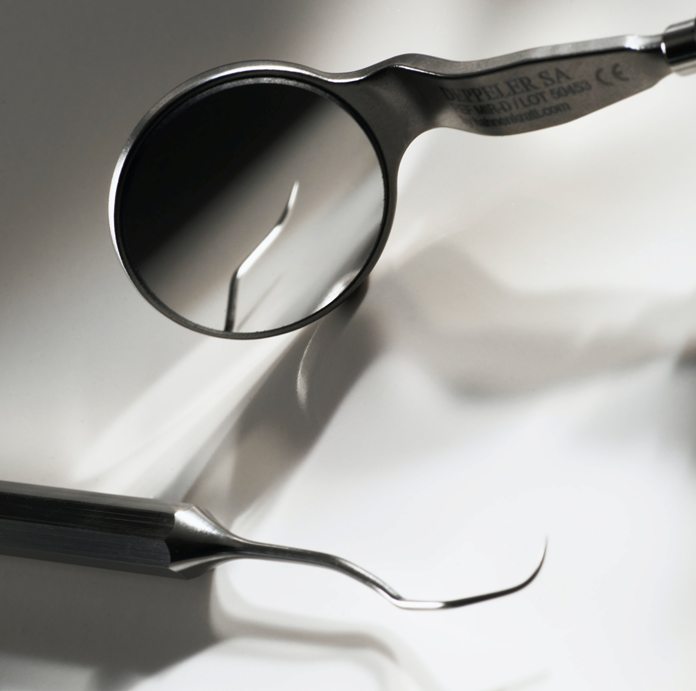
After Treatment Care
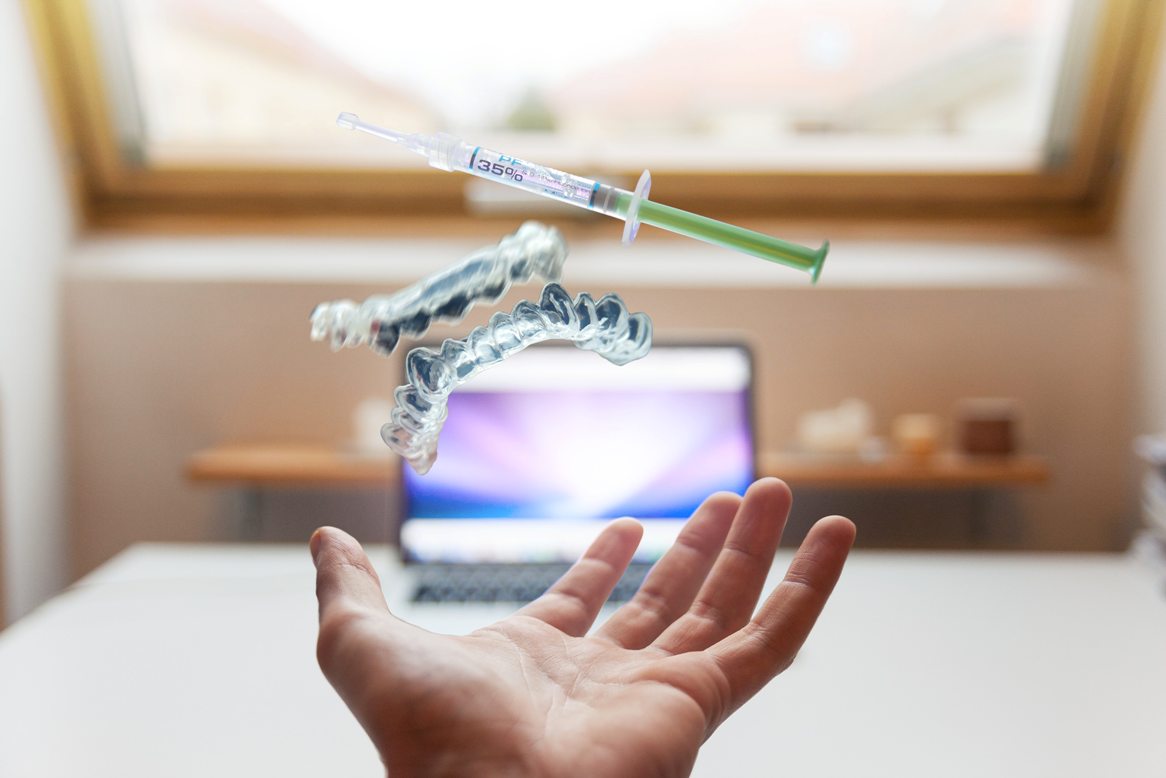
Sensitivity after new filling, crown, or bridge
When a tooth is restored, especially when local anesthetics are used, the temporary or final restoration causes subtle differences in the anatomy of the tooth. This causes a very slight change in how the upper and lower teeth come together. If a tooth is sensitive after the procedure, it can mean a part of the tooth may be coming into contact with another tooth surface and applying unbalanced pressure. If this is the case, a refinement will be needed at a follow up appointment
There are ways to decrease the chance of sensitivity post treatment:
- Careful bonding protocol followed. Our Livermore family dentist follows proper sequence of steps to achieve minimal internal stress buildup and obtain proper bonding
- Careful fitting to opposing teeth to minimize chewing discomfort and cold sensitivity. * This process cannot be rushed.*
- Oxygen / Ozone is used to reduce normal inflammation caused by routine trauma of working on teeth and gums
As an experienced dentist, Dr. Eccles understands that because the patient is numb and the mouth has been open for an extended period of time, it isn’t always possible for the dental patient to know what is the normal bite when moving the jaw, as both muscle and jaw fatigue set in. This can hinder our family dentist in reproducing the best bite fit. After the jaw has time to rest and the anesthetic has time to wear-off, then the patient can begin to feel normal and decide if the teeth come together in the regular, comfortable way.
Sometimes this doesn’t show up for a day or two. Sometimes it only feels “high” when chewing. Sometimes only cold sensitivity will begin. All this is normal for some teeth. This means that the inclines of the teeth need just a little refining adjustment. DO NOT IGNORE THESE SYMPTOMS! You then must ASAP call our dental office and schedule an immediate adjustment of the tooth or teeth worked on.
You risk the beginning of a pain cycle that can cause you extended pain and time inconvenience for both you and the family dentist. All the forces of the chewing muscles will concentrate on these small spots, transferring the force to the bone around the tooth resulting in a microscopic bruise occurring there. That’s why it hurts to bite. This bruising results in inflammation which causes swelling which pushes the tooth out, which results in more traumatic contact between the teeth…and so the cycle of pain continues until the minor adjustment of the teeth occurs and this allows the bruised bone to heal itself. The longer you wait to return to the dental office to have the adjustment done, the longer it will take for the discomfort to heal, and more appointments will be necessary to adjust the tooth and stop the pain cycle resulting in additional costs only if YOU delay returning. This could lead to jaw joint problems. The worst that can happen is that the tooth pain will become irreversible and the tooth will need root canal treatment.
Dr. Eccles, as your family dentist, feels so strongly about this that he is happy to arrange time after hours or on the weekend, if necessary to prevent you from prolonging having the tooth adjusted. If you travel a good distance to see Dr. Eccles dental office in Livermore, like many of our patients do, then it is wise to plan on spending a few hours conveniently in the Livermore area to allow the mouth to return to normal. That will permit you to return and have the adjustment done if necessary, before traveling back to your home. Some of our patients have delayed returning for the necessary adjustment because of the many miles they travel. They have regretted that.
Complete Coordinating and Directing of Related Health Issues
Includes many medical conditions affected by traditional “toxic” dentistry
Two Levels of Treatment Available
BEST OPTION FULL CARE DENTISTRY – Our dental care in Livermore is designed to assure you spend the least possible amount of time in the dentist chair. This is the way we achieve maximum prognosis with lowest discomfort, lowest inconvenience, least time needed, lowest unanticipated treatment and lowest cost. This is baseline dentistry, as I would do exactly for a member of my own family.
“PERFECT MOUTH DENTISTRY” – Maximum cosmetics and comfort. How it would look and how it would feel if your mouth was perfect TO YOU. As a cosmetic dentist in Livermore, Dr. Eccles will also review your cosmetic dentistry options and goals. .
Biological Dentistry
Using science-based, biological techniques, technologies, and materials for your oral and overall health
Family Dentistry
Establishing preventative dental care routine and restorative treatment options for the entire family
Safe Mercury Removal
Replacing amalgams with non-toxic filling materials while safely capturing released mercury
Root Canal
Emphasizing a biological approach to diagnosing and treating infected teeth
Gum Therapy
Addressing periodontal “gum” disease systemically and non-surgically
Cosmetic Dentistry
Restoring and replacing natural teeth using a conservative approach with non-metal materials
Holistic & Biological Oriented Dental Care
Years of Experience
Patients Treated
Mercury Fillings Removed
Reviews & Testimonials
Office Information
87 Fenton St #201
Livermore, CA 94550
S-S: Closed

